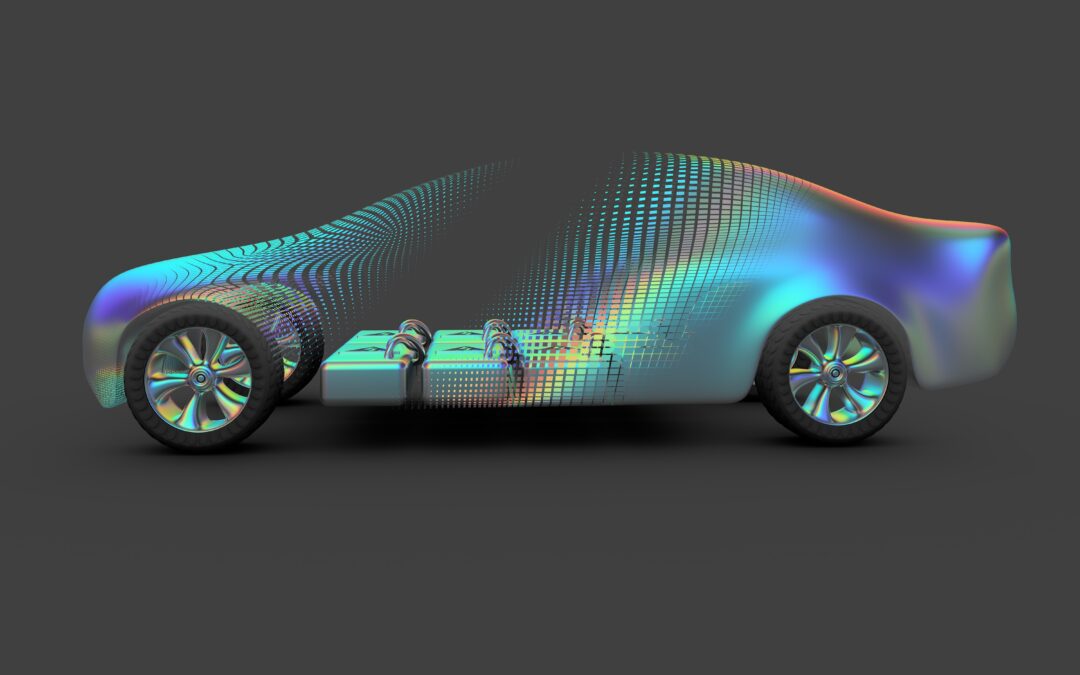Table of Contents
Over the past few years, the development and application of powder coatings for electric vehicles (EVs) has increased significantly. These coatings are now integral to critical EV components such as battery packs, electric motors, and busbars, all of which directly impact vehicle performance and efficiency. Major powder coating manufacturers have introduced product lines specifically tailored to these applications, driven by two primary factors: the economic attractiveness of the EV market and the distinct advantages powder coatings offer over alternative technologies.
EV Market Attractiveness
The EV market has experienced rapid growth in recent years. Although this growth rate will likely moderate, it is expected to remain significantly above global GDP growth rates well beyond 2030. According to the International Energy Agency (IEA), annual EV sales increased from approximately three million vehicles in 2020 to nearly 14 million in 2023—a compound annual growth rate (CAGR) of 67%. EVs’ market share by vehicles sold rose from 4% in 2020 to 18% in 2023 and is projected to reach 44% by 2030, with a forecasted CAGR of 17% from 2023 to 2030.
The dynamic nature of the EV market creates opportunities for innovation, particularly in the previously mentioned components that are central to vehicle safety, range, and charging efficiency. As these components evolve, they demand advanced materials and technologies, allowing suppliers to introduce high-value products tailored to emerging needs. Powder coatings are a prime example, offering solutions to critical challenges in EV component design.
Powder Coatings Add Value in the EV Market
To appreciate the benefits of powder coatings, it is essential to understand their applications in key EV components and the unique set of properties required.
Battery Packs
Battery packs store energy for vehicle operation, consisting of multiple battery cells, control circuitry, and a cooling system, all housed in a protective casing. During charging and operation, components within the battery pack experience high levels of electric current and elevated temperatures due to material resistance. Effective operation demands reliable electrical insulation of the individual components, efficient heat dissipation, and robust protection against environmental factors such as corrosion and chemical exposure.
Powder coatings tailored for cell casings within battery packs deliver high dielectric strength and thermal shock resistance, ensuring safe operation. Coatings for cooling system components and battery pack housings enhance electrical insulation and thermal conductivity while protecting the components from corrosion and exposure to chemicals, maintaining component integrity and efficiency under demanding conditions.
Electric Motors
Electric motors convert electricity from the battery pack into motion using opposing magnetic fields in the stator and rotor to rotate the wheels and propel the vehicle. The magnetic field in the stator is generated by the flow of electric current through copper hairpin windings, necessitating electrical insulation, effective heat management, and environmental protection.
During motor assembly, powder coatings are applied to exposed welded areas of the hairpins, providing essential insulation, corrosion resistance, and protection against automotive fluids. These coatings extend motor longevity while supporting efficient energy conversion.
Busbars
Busbars distribute power across the EV’s electrical system by serving as a conductive pathway between the battery pack, inverter, motor, and other components of the vehicle where high voltage is required. Constructed from highly conductive materials, busbars must efficiently handle high currents while minimizing resistance.
Powder coatings on busbars offer exceptional electrical insulation and thermal conductivity, managing heat generated by electrical resistance. These coatings also protect against corrosion and chemical damage, ensuring long-term reliability.
Powder Coating Benefits for EVs
Powder coatings excel in meeting the increasingly stringent demands of EV components. Their high dielectric strength ensures electrical insulation, while advanced formulations facilitate heat dissipation and withstand prolonged exposure to high temperatures. Additionally, powder coatings provide superior corrosion and chemical resistance in a single coat, with excellent edge coverage.
Tailored formulations enable manufacturers to optimize coatings for specific applications, balancing properties such as electrical insulation, thermal conductivity, and durability. Moreover, the sustainability profile of powder coatings—free from solvents and associated emissions—aligns with the environmental ethos of EVs, making them a preferred choice for developers and manufacturers.
As the EV market continues to expand, powder coatings are poised to play a critical role in enhancing the performance, safety, and sustainability of electric vehicles. Their unique ability to meet the complex demands of EV components positions them as a key enabler in the ongoing evolution of this transformative industry. For product manufacturers, adopting advanced powder coatings offers a pathway to innovation, differentiation, and alignment with the sustainable future of transportation.
To learn more, reach out to the author at ecasebolt@chemquest.com or visit https://chemquest.com/cqpcr.
Read in ipcm.

